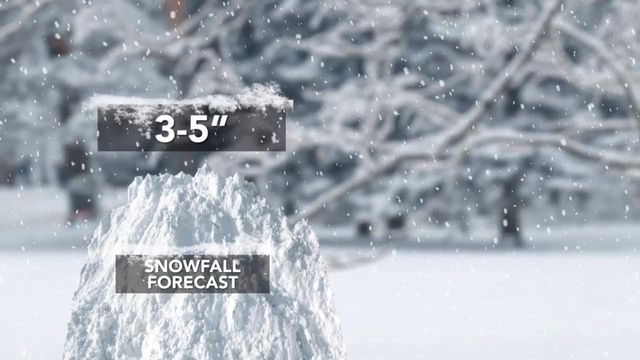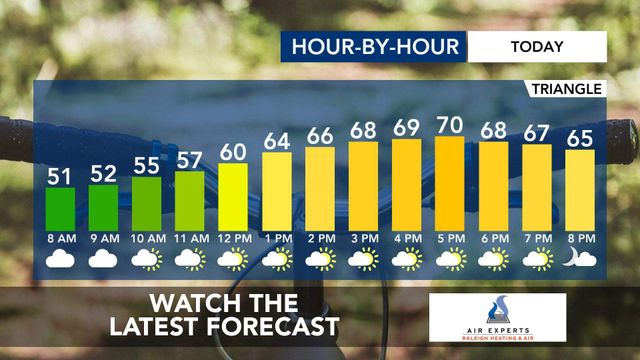No El Niño this year could mean a milder winter with less snow
Winter officially begins in just 25 days. Ahead of Dec. 21, Elizabeth Gardner and Mike Maze share their winter weather predictions, including the biggest question of all: Will we see snow?
Looking back
Last winter, between December 2018 and February 2019, temperatures were mostly above normal. According to Maze, 52 of the 91 days had above-normal temperatures. The warmest day measured 79 degrees on Feb. 7, and the coldest days were Jan. 21 and 22, which only got to 17 degrees.
Looking at snow, WRAL predicted the Triangle would get between 5 to 8 inches last winter. According to Gardner, the area actually received 8.9 inches.
Looking ahead
El Niño develops in the Pacific Ocean every few years, affecting weather across the world. Normally, trade winds in the tropical Pacific blow from east to west, pushing warmer water to the western side of the Pacific. During El Niño years, the trade winds are weaker, allowing waters to warm along Central and South America.
El Niño typically means cooler than normal winters for the south and southeast and wetter than average conditions from Southern California to North Carolina.
According to Gardner, since there is no El Niño this winter, meteorologists looked at snow and cold trends in the Triangle in other neutral years.
"We are in what we call an El Niño neutral year, meaning there is no El Niño or La Niña," Gardner said. "So we decided to dig in and do some research on what happened here during past winters when we experienced a neutral year."
According to Maze, in the last 30 years, meteorologists recorded eight years with no El Niño. "In all but one of those years, temperatures averaged out above normal," Maze said. "And only one year had above normal snowfall."
According to Gardner, in an El Niño neutral year, meteorologists can also study an atmospheric circulation pattern called the arctic oscillation.
"It steers the arctic air known as the polar vortex," Gardner said. "In winter, the arctic oscillation often pushes the jet stream south, causing cold outbreaks, or north, bringing us milder temperatures. Unlike El Niño, the arctic oscillation can change as often as every few weeks to as long as a few months. We’ll be watching it closely this winter to alert you to any pattern changes."
The main point
So what's the takeaway? After studying previous years, Gardner and Maze think it will be a milder winter with less snow than last year.
"Our research leads us to believe that, on average, temperatures this winter will be above normal with a few cold snaps," Maze said.
"For snowfall, our forecast calls for 3 to 5 inches -- just under the annual average of 6.8 inches," Gardner said.
When it comes to cold weather, Gardner loves it. Maze not so much.
"I know I'm hoping for lots and lots of snow," Gardner said.
"Well, while you’re sledding around in the snow, I'll be dreaming of warmer weather," Maze said.











